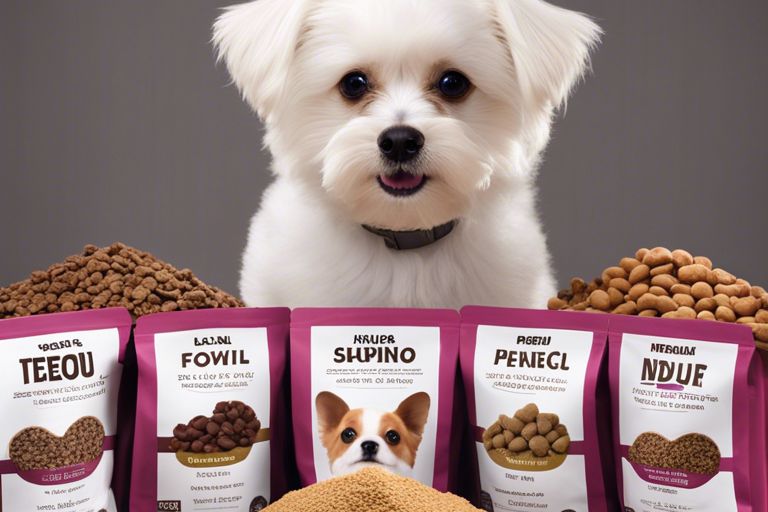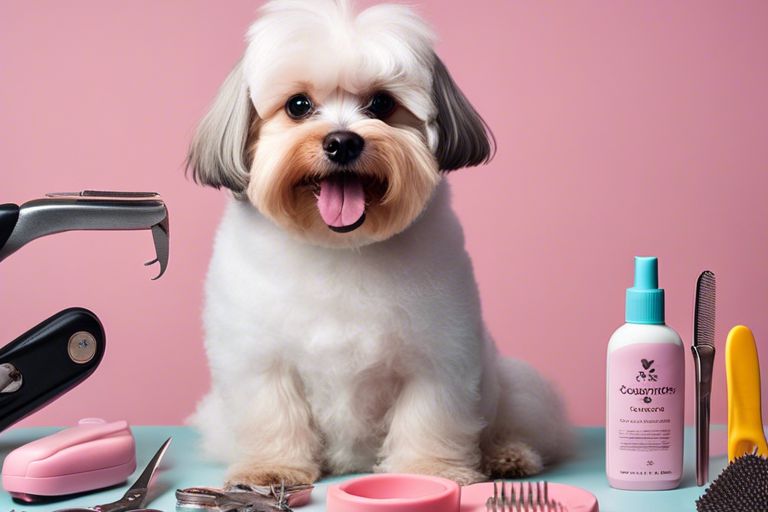As a devoted dog owner, I understand the importance of proper grooming for my furry friend. Grooming your dog’s coat at home is not only a way to bond with your pet, but it is also crucial for their health and well-being. Regular grooming helps to prevent matting, reduces shedding, and keeps your dog’s coat shiny and healthy. However, it’s important to be aware of the dangers of improper grooming, such as causing irritation or injury to your dog’s skin. In this blog post, I will share with you the best techniques and tools for grooming your dog’s coat at home, as well as some important tips to keep in mind to ensure a safe and effective grooming routine.
Key Takeaways:
- Regular Brushing: Groom your dog’s coat at home by regularly brushing it to remove loose fur and prevent matting. Use a suitable brush for your dog’s coat type, and be gentle to avoid causing discomfort.
- Bathing and Drying: Regular baths can help keep your dog’s coat clean and healthy. Use a dog-specific shampoo and ensure thorough drying to prevent skin issues. Avoid over-bathing, as it can strip natural oils from the coat.
- Trimming and Maintenance: Trim your dog’s coat as needed to remove excess length, especially around the eyes, ears, and paws. Keep an eye out for any signs of skin irritation or lumps while grooming, and consult a professional groomer when necessary.
I am writing a blog post ‘What is the best way to groom my dog’s coat at home?’.
Understanding Your Dog’s Coat
Assuming you want to groom your dog’s coat at home, it’s essential to understand the type of coat your dog has. Different coat types require different grooming methods and tools. Whether your dog has short, long, curly, wire, or double coats, understanding their specific needs will help you maintain their coat health and appearance.
Different Coat Types and Their Requirements
When it comes to grooming your dog’s coat, it’s crucial to consider the different types and their specific requirements. Short-coated dogs, such as Labradors or Beagles, typically require regular brushing to remove loose hairs and dirt. Long-coated breeds like Shih Tzus or Maltese may need daily brushing to prevent mats and tangles. Curly-coated dogs, such as Poodles or Bichon Frises, often need specialized tools to maintain their curls. Wire-coated breeds like Terriers may need stripping to remove dead hair. Double-coated dogs, like German Shepherds or Huskies, shed heavily and require frequent brushing to remove dead undercoat. Understanding your dog’s specific coat type and its requirements will help you choose the right grooming tools and techniques.
- Labradors or Beagles: Regular brushing to remove loose hairs and dirt
- Shih Tzus or Maltese: Daily brushing to prevent mats and tangles
- Poodles or Bichon Frises: Specialized tools to maintain their curls
- Terriers: Stripping to remove dead hair
- German Shepherds or Huskies: Frequent brushing to remove dead undercoat
Though each coat type has its own unique requirements, regular grooming is essential for all dogs to maintain a healthy coat and skin.
Identifying Your Dog’s Coat Characteristics
When grooming your dog’s coat, it’s important to identify the coat characteristics. Look for signs of mats, tangles, dryness, or skin irritation. Regularly check for pests such as fleas or ticks and address any issues promptly. Understanding your dog’s specific coat characteristics will help you tailor your grooming routine to their individual needs.

Preparing for Home Grooming
One of the most important aspects of grooming your dog at home is making sure you are well-prepared. I recently came across an article on DogSeeChew that I found very helpful, which outlines 11 Easiest Ways for Dog Grooming at Home. It provides some great tips and tricks for at-home grooming. I highly recommend giving it a read.
Essential Tools and Supplies
When grooming my dog at home, I always make sure to have the essential tools and supplies on hand. This includes a good quality brush or comb suitable for my dog’s coat type, dog-specific shampoo and conditioner, nail clippers, styptic powder in case of any nail bleeding, and a pair of blunt-tipped scissors for trimming any stray hairs. Keeping these items easily accessible ensures I can groom my dog effectively and efficiently.
Creating a Safe and Comfortable Grooming Space
Creating a safe and comfortable grooming space is essential for both my dog’s well-being and my own. I ensure the area is well-lit and free from any potential hazards, such as sharp objects or slippery surfaces. I also lay down a non-slip mat to provide a comfortable surface for my dog to stand on during the grooming process. This helps to keep them relaxed and secure, making the experience more positive for both of us.
Grooming Techniques
After establishing a routine for grooming your dog’s coat, it’s essential to master the proper grooming techniques to keep your furry friend looking and feeling their best. Grooming involves various tasks, including brushing and de-matting, bathing and drying, trimming and clipping, as well as ear, eyes, and nail care. Each of these tasks plays a crucial role in maintaining your dog’s overall health and appearance.
Brushing and De-matting
Brushing your dog’s coat is not just about keeping them looking neat; it also helps to remove dead hair, distribute natural oils, and prevent mats and tangles. Regular brushing and de-matting are essential for preventing skin irritation and discomfort for your pet. Make sure to use the right brush for your dog’s coat type, and be gentle to avoid causing any pain or discomfort. If your dog already has mats or tangles, use a detangler spray or seek professional grooming services to deal with them effectively.
Bathing and Drying
While some dogs may not need frequent baths, it’s essential to bathe your dog when they start to develop an odor or if they get dirty. Use a mild dog shampoo and make sure to rinse thoroughly to prevent skin irritation. After bathing, be sure to dry your dog completely, as leaving them wet can lead to skin infections. Use a low-heat setting on a hairdryer or towel dry if your dog is afraid of the dryer.
Trimming and Clipping
Regular trimming and clipping of your dog’s coat help to maintain a tidy appearance and prevent their fur from becoming overgrown and uncomfortable. Pay attention to sensitive areas such as the paws, face, and tail, and be extra cautious when using scissors or clippers. If you are unfamiliar with grooming techniques, consider seeking professional assistance to ensure a safe and effective grooming experience for your pet.
Ear, Eyes, and Nail Care
When grooming your dog, don’t forget to pay attention to their ears, eyes, and nails. Regularly cleaning your dog’s ears and eyes can help prevent infections, while trimming their nails is crucial for their comfort and mobility. If you are unsure how to perform these tasks, consult with a veterinarian or professional groomer for guidance.
Advanced Grooming Tips
Despite regular grooming, there are times when your dog’s coat might need some extra attention. Here are some advanced grooming tips to ensure your dog’s coat stays healthy and looking its best:
- Brushing Techniques
- Bathing Methods
- Trimming and Clipping
| Tip | Use slicker brushes for removing mats and tangles, and bristle brushes for smoothing and finishing the coat. |
| Benefit | Proper brushing techniques will help prevent mats and tangles, and also distribute natural oils throughout the coat for a healthy shine. |
| Tip | Use shampoo formulated for your dog’s specific coat type, and always rinse thoroughly to prevent skin irritation. |
| Benefit | Proper bathing methods will help keep your dog’s coat clean, prevent skin issues, and maintain a healthy sheen. |
| Tip | Invest in professional-grade grooming tools and take your time to avoid accidentally cutting your dog’s skin. |
| Benefit | Regular trimming and clipping will help maintain your dog’s coat length, prevent matting, and promote better airflow to the skin. |
Handling Sensitive Areas
When grooming your dog, it’s important to be extra cautious around sensitive areas such as the ears, paws, and underbelly. Use gentle, slow movements and reassure your dog throughout the process to reduce anxiety and stress. Always keep a close eye on your dog’s body language and stop immediately if they show signs of discomfort or distress.
Addressing Common Skin and Coat Issues
Some common skin and coat issues in dogs include dry skin, allergies, and hot spots. If you notice any unusual changes in your dog’s coat or skin, it’s essential to consult with a veterinarian. They can provide proper diagnosis and treatment options to address these issues effectively. Additionally, maintaining a balanced diet and regular grooming routine can help prevent these issues from occurring.
Conclusion
Presently, the best way to groom your dog’s coat at home is to regularly brush and comb their fur to prevent matting and tangles. This not only helps to maintain a healthy coat but also serves as a bonding experience between you and your furry friend. In addition, regular baths with dog-friendly shampoo and conditioner can help keep their coat clean and smelling fresh. Remember to trim their nails and clean their ears as part of the grooming routine to ensure their overall health and wellness. Consult with a professional groomer for specific advice on your dog’s breed and coat type, and always approach grooming with patience and care for the best outcome.
FAQ
Q: What is the best way to groom my dog’s coat at home?
A: The best way to groom your dog’s coat at home is to start by brushing your dog regularly to remove loose hair and prevent mats from forming. Use a grooming brush or comb that is suitable for your dog’s coat type. Bathe your dog using a gentle dog shampoo and conditioner, and dry thoroughly to prevent skin issues. Regularly check for fleas, ticks, and any abnormalities in the coat and skin.
Q: How often should I groom my dog’s coat at home?
A: The frequency of grooming your dog’s coat at home depends on the breed and coat type. Dogs with longer or thicker coats may require daily brushing to prevent matting and tangles, while shorter coats may only need to be brushed a few times a week. Bathing frequency also varies, but generally, it is recommended to bathe your dog every 4-6 weeks.
Q: Are there any specific tools or products I should use for grooming my dog’s coat at home?
A: It is important to use the right tools and products for grooming your dog’s coat at home. Invest in a good quality brush or comb that is suitable for your dog’s coat type. Additionally, use a gentle dog shampoo and conditioner to bathe your dog, and consider using detangling sprays for dogs with longer coats. Nail clippers and ear cleaning solutions may also be necessary for a complete grooming routine.

